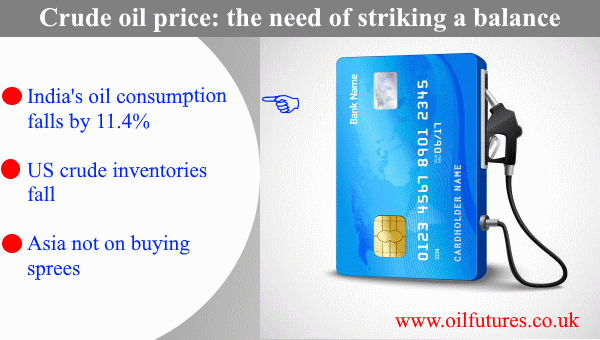The price of crude oil remains static at present,
having been through some understandable fluctuations in light of the Omicron
outbreak across the world.
As of 09:00 GMT on Friday, the price of WTI and
Brent stood at $71.33 and $74.66 respectively.
The modest draw of the US crude inventories this wee,
shown by both the API and EIA, did not boost an increase in price that some
analysts predicted: perhaps, the four successive crude builds at the biggest
storage hub in the US at Cushing, Oklahoma, may have dampened the mood of
optimism of the traders to some extent; Bloomberg reports that the strategic facility
managed to increase the volume above what it called, a key threshold – 30 million
barrels.
In another development, Indian oil ministry announced
that the fuel demand in India fell by 11.4% in November: the sale of gasoline
has come down by 0.7% and that of diesel by 7.6%.
The drop of sale of diesel in the world’s third
largest consumer should be an eye-opener for some of the producers, who did not
heed the repeated requests made by the major consuming nations.
India’s main transport networks rely on
diesel-driven trucks for distribution in the vast country and the direct impact
on it – and the Indian economy, in turn - by the rising fuel prices is all too
obvious; it is something that the producers cannot ignore anymore as irrelevant.
In this context, Saudi Arabia’s move to increase the
price for Asia – and the US too – will not work in favour of the Kingdom; nor
will it bring about the desired outcome; there are reports that the Asian
consumers stubbornly refuse to increase their imports at higher prices, despite
the impact on the region by Omicron still being insignificant.
In short, the producers, especially in the Middle
East, are going to suffer again.
In the past, Saudis have been going both ways when
it comes to deciding the price of crude oil: they have increased the price for
a few weeks and then reversed the move a few times. Analysts believe the
Kingdom may reverse the recent price hike for the region again, while taking
into account the ground realities.
The recent price crash, which came as a bolt from
the blue, certainly left the Saudi decision makers in limbo; they have been
planning massive projects in preparation for a post-oil era, which need cash.
Since a cut in production by the OPEC+, in which the
Kingdom is the de factor leader, is a guaranteed path to incurring the wrath of
the US, it resorted to a measure that stands relatively low on the antagonising
index – increasing the price, targeting its main customer base.
The data from the consumer nations and the US
inventory draws, despite being modest, show that there is a distinct negative
correlation between the crude oil price and consumption, even if an ambitious statistician
tried to make it turn in his favour by
manipulating various tools.
Therefore, it’s high time the producers learned how
to strike a balance in order to save interests of the former and those of the
consumers, especially at a very difficult time for the global economic
recovery.







